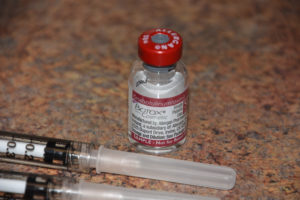Migraine headaches are a major concern and lifestyle alteration for those afflicted. While some have only occasional or sporadic migraines, others have more frequent and intense bouts that affects many parts of their life and are even disabling. Drug therapy does help many but not all and it is associated with some side effects. Besides ineffectiveness or a limited improvement, some of the side effects of these drugs are not worth the limited benefits in migraine reduction that they provide.
Newer migraine treatments include Botox injections and surgical decompression. Based on the concept that there is a peripheral trigger in certain migraines, nerve decompression by muscle chemorelaxation and then surgical muscle resection from around the involved nerve has been shown to offer long-term improvement. While there has been compelling evidence that such treatments work, new and independently conducted studies are always welcome.

Nineteen of the studied patients (80%) were improved by the surgery. While a few (2) had complete elimination of their migraines, most (17) reported significant improvement. Among those patients who responded to surgery, average improvement from baseline was 97%. Among all patients studied, average improvement was 78% from baseline.
While this was a relatively small patient study compared to some prior published reports, it nonetheless shows comparable findings. This study adds to the growing body of medical literature that shows Botox injections and surgical decompression can be tremendously effective in reducing migraines in the properly screened patient. Since the screening procedure for migraine surgery is Botox, it makes the decision and the probability for surgical success easy.
One thing I have not yet seen reported and have observed in my own migraine patients is different levels of success depending on the trigger point location. By far, surgical decompression of the greater occipital nerve (back of the head migraines) seems to work every time and usually quite dramatically. Less dramatic success is seen in some of the frontal trigger points, particularly the temporal location. This may be because there are different levels of compression along the path of the zygomaticotemporal nerve and other regional nerves, such as the auriculotemporal, may also be a contributing cause.
Dr. Barry Eppley
Indianapolis, Indiana


